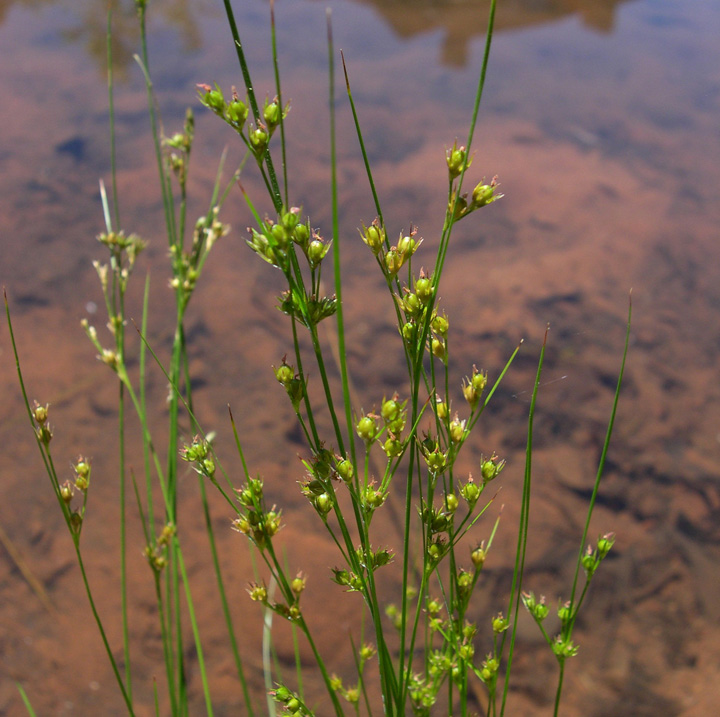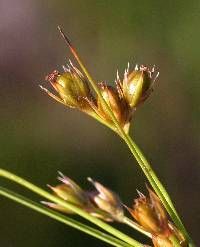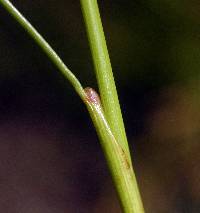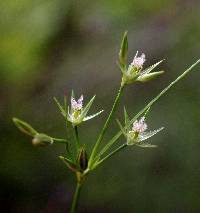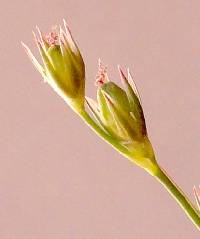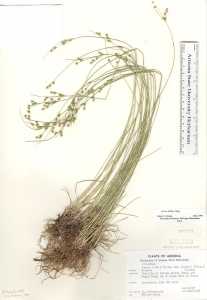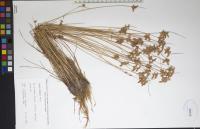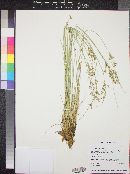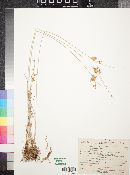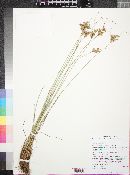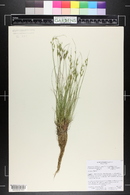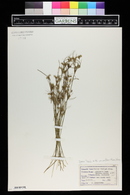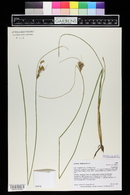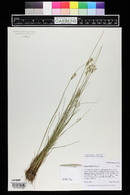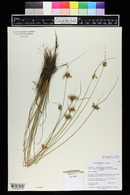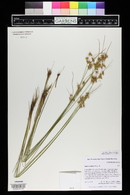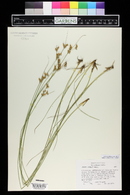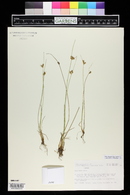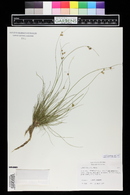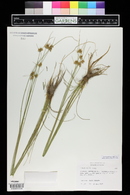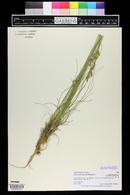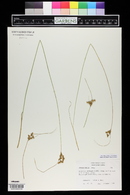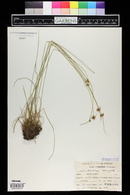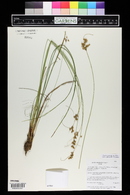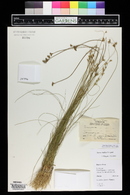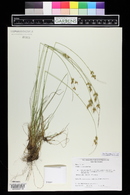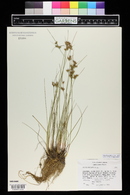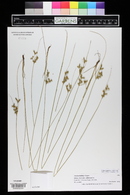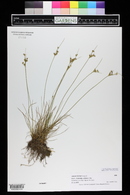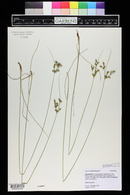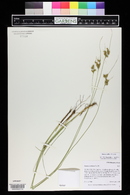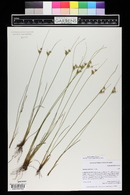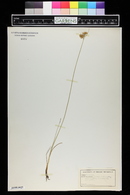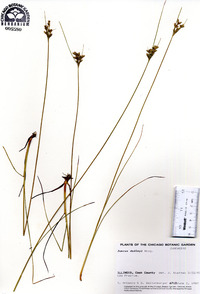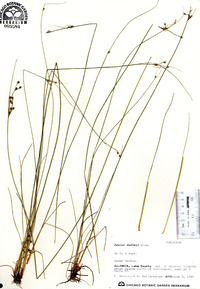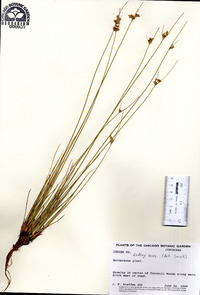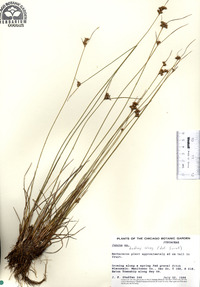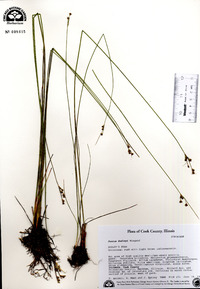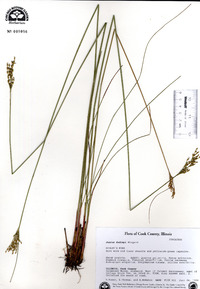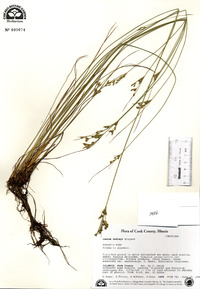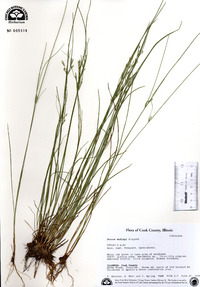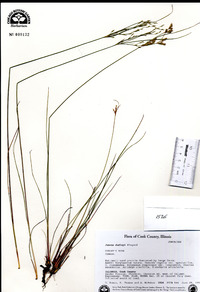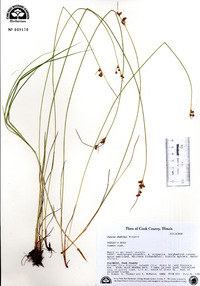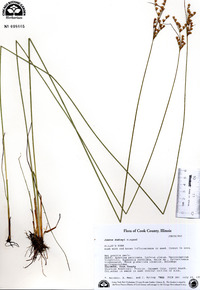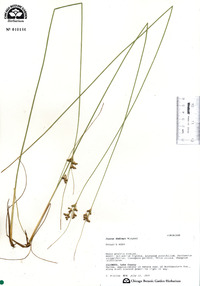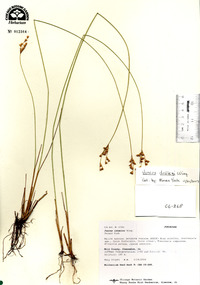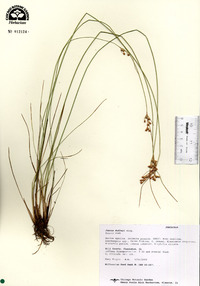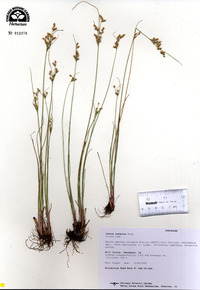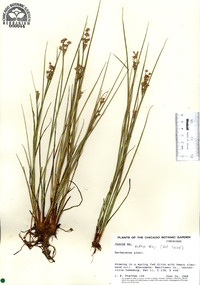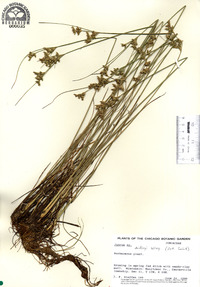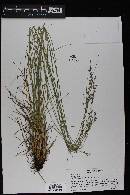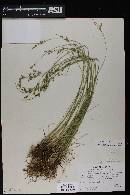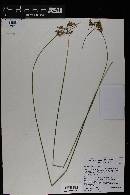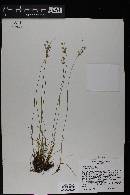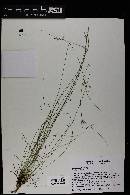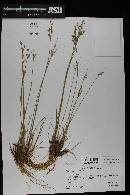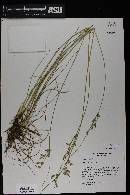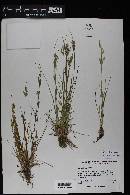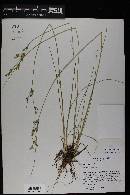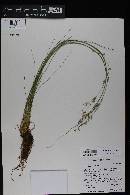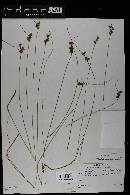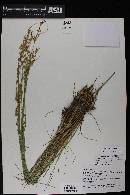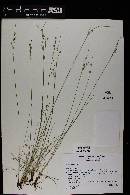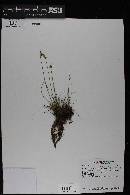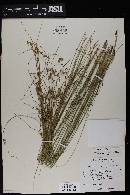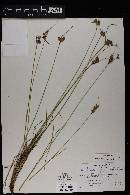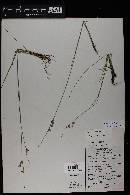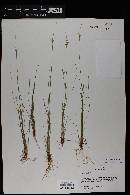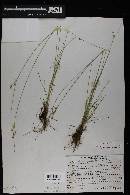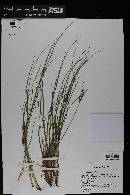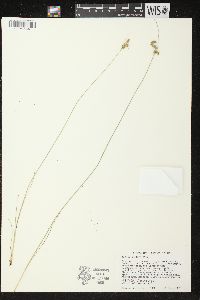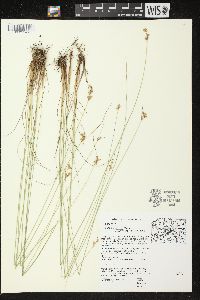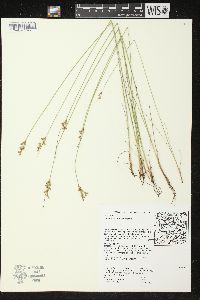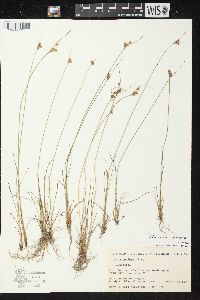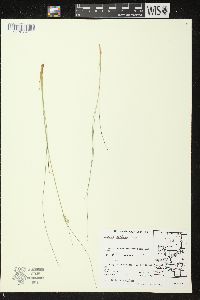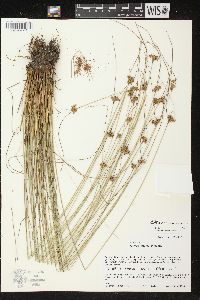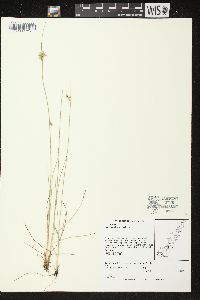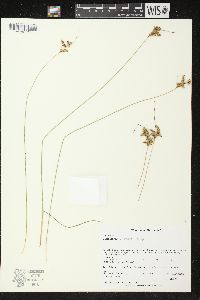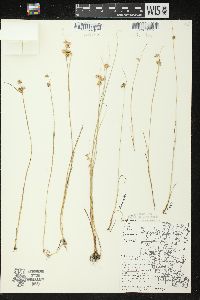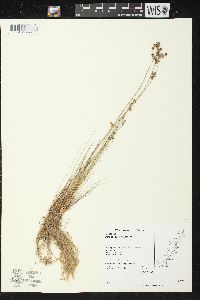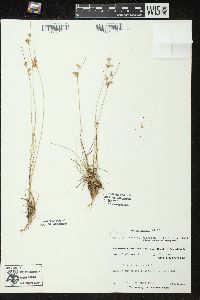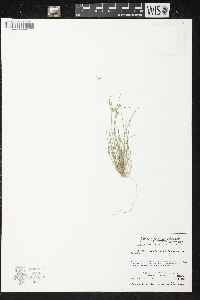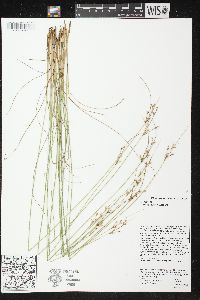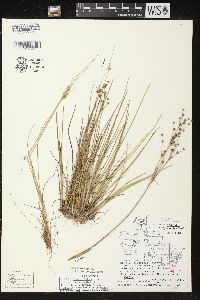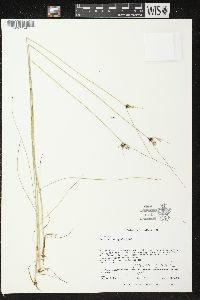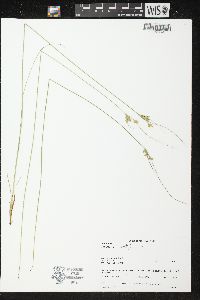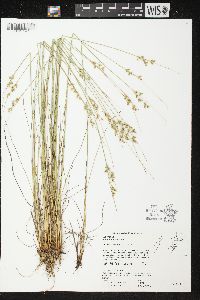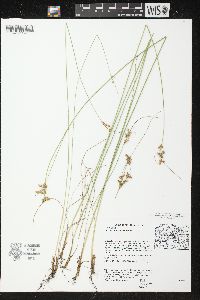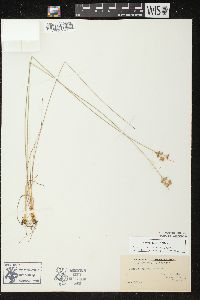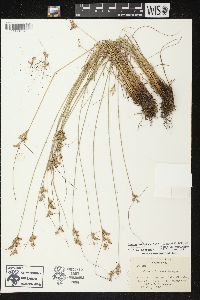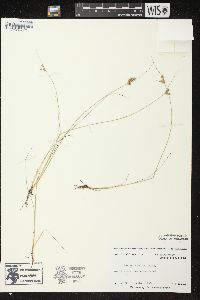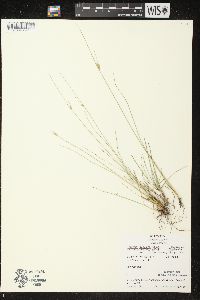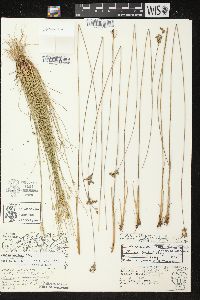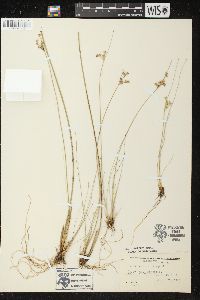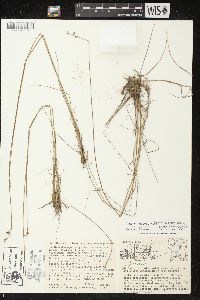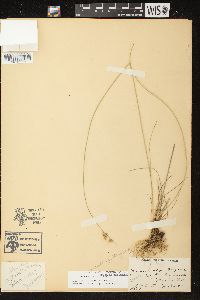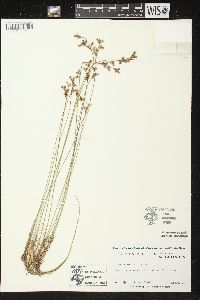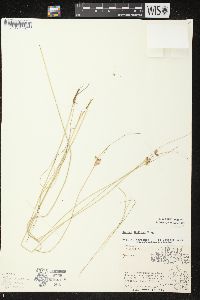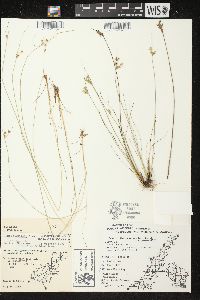Juncus dudleyi
|
|
|
|
Family: Juncaceae
Dudley's Rush, more...Dudley rush
[Juncus tenuis var. dudleyi (Wieg.) F.J. Herm.] |
Herbs, perennial, 2--10 dm. Rhizomes densely branching. Culms 1--20. Cataphylls 1--3. Leaves basal, 2--3; auricles yellowish, 0.2--0.4 mm, leathery; blade flat, 5--30 cm x 0.5--1 mm, margins entire, turned up, occasionally involute. Inflorescences compact and few flowered to loose and lax with to 80 flowers, 1.5--5(--9) cm; primary bract usually exceeding inflorescence. Flowers: bracteoles 2; tepals greenish, lanceolate, 4--5 mm; inner series nearly equal, spreading in fruit, nearly equal to or exceeding capsule; stamens 6, filaments 0.8--1.2 mm, anthers 0.6--1 mm; style 0.2 mm. Capsules tan, 1-locular to pseudo-3-locular, ellipsoid, 2.9--3.6 x 1.5--1.9 mm. Seeds tan to amber, ellipsoid to lunate, 0.4--0.67 mm, not tailed. 2n = ca. 84. Flowering and fruiting spring--early summer. Exposed or shaded sites in sandy to clayey soils, usually moist areas such as along stream banks, ditches, around springs; Alta., B.C., Man., N.B., Nfld. and Labr., N.W.T., N.S., Ont., P.E.I., Que., Sask., Yukon; Alaska, Ariz., Ark., Calif., Colo., Conn., Del., D.C., Idaho, Ill., Ind., Iowa, Kans., Ky., La., Maine, Md., Mass., Mich., Minn., Miss., Mo., Mont., Nebr., Nev., N.H., N.J., N.Mex., N.Y., N.Dak., Ohio, Okla., Oreg., Pa., R.I., S.Dak., Tenn., Tex., Utah, Vt., Va., Wash., W.Va., Wis., Wyo.; Mexico. Perennial grasslike forb 20 cm - 1 m tall Leaves: two to three, basal, 5 - 30 cm long, 0.5 - 1 mm wide, linear, grasslike, flattened in cross section, but turned slightly upward or inrolled at edges, and lacking crosswise partitions inside (non-septate). The leaves also have a hard, firm, leathery, yellowish, basal, very short (0.2 - 0.4 mm), smooth-edged, round-tipped, ear-like appendage (auricle) at the top of the leaf sheath. Inflorescence: a terminal, 1.5 - 9 cm long, multi-branched structure which is either compact and few flowered, or loose and open with up to 80, single, short-stalked, radially symmetric, small flowers at branch tips. The entire branched inflorescence is subtended by a large (usually longer than full inflorescence) bract, and the individual short-stalked flowers have two small bracts (bracteoles) positioned directly below the tepals. Stamens: six, with 0.8 - 1.2 mm long filaments, and only slightly shorter anthers (0.6 - 1 mm). Pistil: with one superior ovary, a 0.2 mm long style, and three stigmas. Fruit: single-chambered to incompletely three-chambered, tan, 2.9 - 3.6 mm tall, 1.5 - 1.9 mm wide, ellipsoid, short-stalked capsules borne on congested branches. Each capsule is subtended by the spreading, remnant tepals, which are about the same height or longer than the capsule. Stems: tufted, erect, smooth, round in cross section, and arising from densely branched rhizomes. Seeds: many, tan to amber, 0.4 - 0.67 mm long, ellipsoid to crescent-shaped with short-pointed or abruptly narrowed tips, but without distinct narrowed tails at the ends. Tepals: six in two whorls of three, greenish, 4 - 5 mm long (inner three sometimes a bit shorter), lance-shaped with pointed tips. in fruit, the tepals are spreading. Similar species: Juncus dudleyi is most similar to J. interior, except that species has shorter anthers (only to 0.6 mm), usually shorter inflorescence bract (does not exceed inflorescence), and the ear-like appendages at the summit of the leaf sheaths (auricles) are more slender, less rigid, papery, whitish or purplish, and sometimes irregularly jagged on the edge. Two other very closely related species are J. tenuis and J. anthelatus, but they both have very obvious, long, transparent, fragile, and pointed leaf sheath auricles. Although J. greenei may sometimes appear similar, it can be distinguished by its leaves which are almost round in cross section, and the three-chambered capsules are normally at least a little longer than the tepals. Flowering: May to July Habitat and ecology: Common, in moist meadows, calcareous fens, and even degraded prairies. Occurence in the Chicago region: native Notes: This species has previously been included under J. tenuis as a variety, but it is currently treated as a separate species with distinct differences in the leaf sheath auricles. Author: The Field Museum FNA 2000, Kearney and Peebles 1969 Common Name: Dudley's rush Duration: Perennial Nativity: Native Lifeform: Graminoid General: Perennial herb from densely branching rhizomes, 20-100 cm. Vegetative: Culms 1-20, with 1-3 cataphylls, 2-3 basal leaves with yellowish auricles less than 0.5 mm, leathery; blade flat 5-30 cm long by 0.5-1 mm wide, entire margins, turned up, occasionally involute. Inflorescence: Compact and few flowered to loose and lax with up to 80 flowers, 1.5-5 cm; primary bract usually exceeds inflorescence; flowers with 2 bracteoles, greenish tepals, lanceolate, 4-5 mm, inner series nearly equal, spreading in fruit and nearly equal to or exceeding capsule; 6 stamens with filaments 0.8-1.2 mm, anthers 0.5-1 mm, style 0.2 mm; capsules tan, 1-locular to pseudo 3-locular, ellipsoid, 3-3.5 mm long by 1.5-2 mm wide. Ecology: Found in both exposed and shaded sites in sandy and clayey soils, usually in moist soils along river banks, and around springs from 1,000-6,500 ft (305-1981 m); flowers June-September. Notes: Most recent treatments combine what were previously considered three different varieties into this single species. Ethnobotany: Used in delicate mat making or for small pieces. Etymology: Juncus comes from the Latin jungere, to join or bind, while dudleyi is named for William Russel Dudley (1849-1911) head of the botany department at Stanford. Synonyms: Juncus tenuis var. dudleyi, J. tenuis var. uniflorus Editor: SBuckley 2010, FSCoburn 2015 From Flora of Indiana (1940) by Charles C. Deam Very common in wet fields, marshes, ditches, low open woods, sandy or marly borders of lakes, and other moist open habitats. …… Indiana Coefficient of Conservatism: C = 3 Wetland Indicator Status: OBL |

